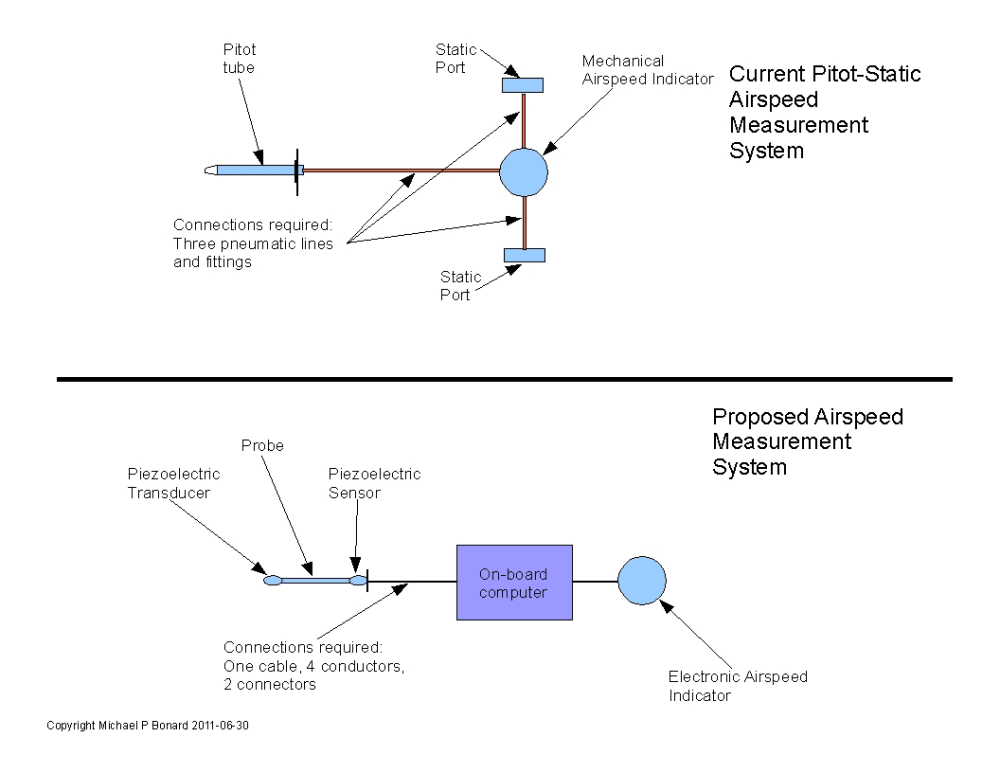Airspeed Measurement Using Acoustic Wave Propagation
A. Current industry standard:
All aircraft currently flying today use a Pitot tube and static pressure ports to determine airspeed. Airspeed is derived from the static and dynamic pressure difference. However, there are significant issues with this type of measurement: in spite of its simplicity, there is an absolute needs to carefully monitor the Pitot tube and static pressure ports openings to prevent against any obstruction of the inputs to the Pitot sensor or the static pressure sensor. This Pitot system is also very sensitive to icing (all Pitot tubes are equipped with a heater), to insect occlusion, and to maintenance errors (failure to remove masking tapes from the static ports). All these issues have created multiple crashes in the past, with total destruction of the aircraft and loss of lives, with the latest accident being likely the Air France flight 447.
B. Proposal:
To prevent the loss of airspeed information due to mechanical obstruction of any of the pressure sensor ports, it is possible to derive the airspeed by using the transit time of an ultrasonic pulse sent through the air stream. This transit time is very simply derived from the airspeed and the speed of sound in the air at the altitude where it is measured. The benefits of such method is to prevent the disabling of the sensors due to mechanical obstructions (icing, tape, debris, insects, etc.).
System Description:
The measuring device consists of a probe located in a position on the aircraft that is exposed to undisturbed airflow. This probe is equipped at its forward extremity with an ultrasonic piezoelectric transducer. This transducer generates short ultrasound pulses that propagate through the moving outside air. A piezoelectric sensor located at the base of the probe detects the pulse arrival time.
Operation:
A short pulse of ultrasounds is generated at the far end of the probe by the piezoelectric transducer. Propagation of this pulse is such that the ultrasound wave traverses the moving air along the probe. The piezoelectric sensor located at the base of the probe detects the pulse that has traversed the moving air. An electronic timing system measures the time difference between the transmission and the reception of the pulses. The aircraft airspeed is a linear function of the transit time of the pulse and of the speed of sound at the altitude. The speed of sound is derived from the altimeter, and the airspeed is calculated with a very simple algorithm.
C. Conclusion:
The proposed measurement system is extremely resilient to all the impairments that affect the currently installed airspeed measurement systems. It is mechanically very robust (no mechanical calibration needed), electrically very simple, does not need a heater (since ice conducts ultrasounds), and extremely economical. It is easier to install than classical Pitot-static systems (no need for pneumatic tubes and fittings installation) and can be expanded to measure airspeed in the three axis (horizontal, vertical and lateral speeds) for helicopters.
Like this entry?
-
About the Entrant
- Name:Michel Bonard
- Type of entry:individual
- Patent status:none

